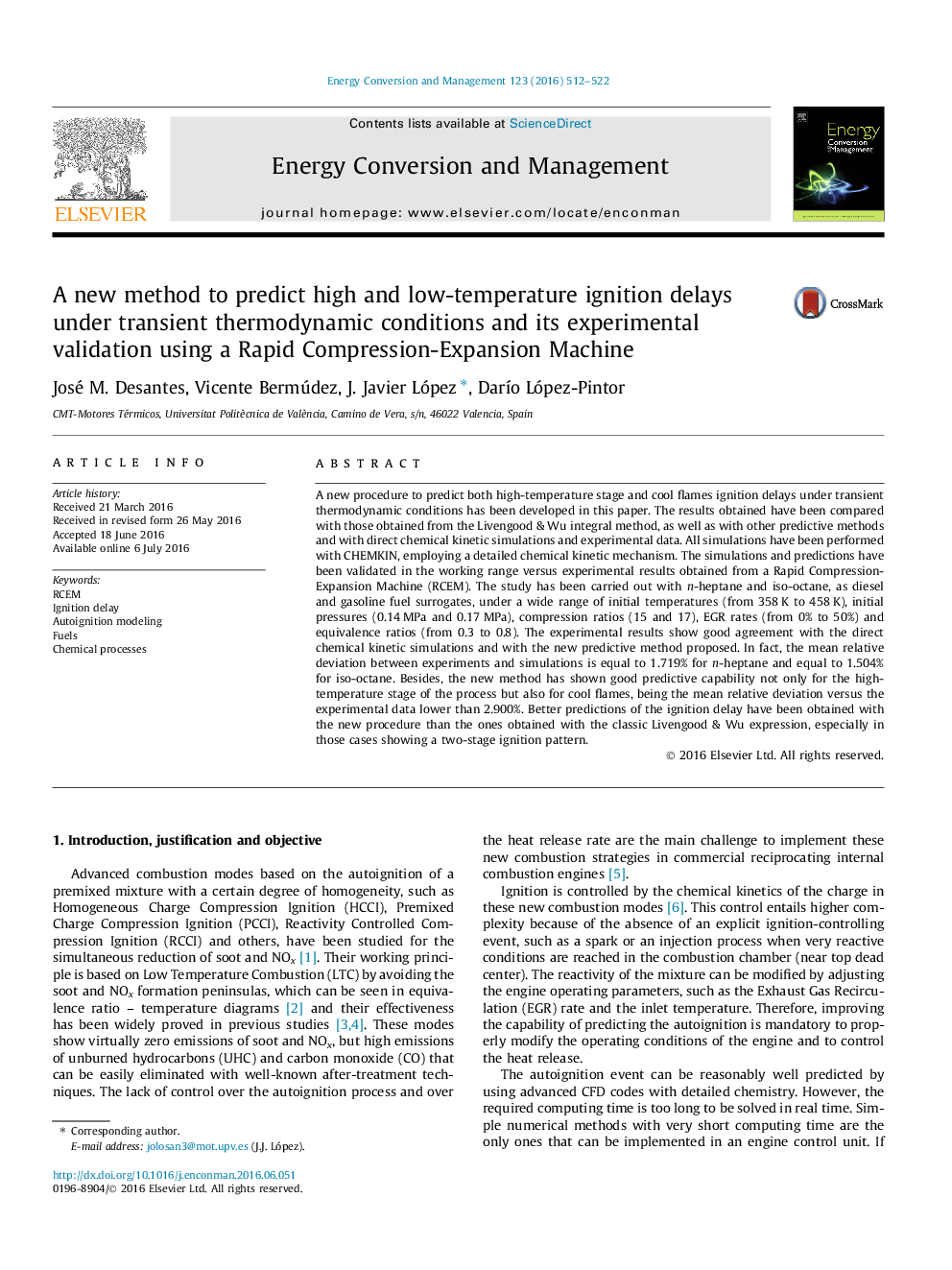| کد مقاله | کد نشریه | سال انتشار | مقاله انگلیسی | نسخه تمام متن |
|---|---|---|---|---|
| 760164 | 1462839 | 2016 | 11 صفحه PDF | دانلود رایگان |
• A predictive method for ignition delays of cool flames and high-temperature stage has been developed.
• Better predictions are obtained with the new method than with the Livengood & Wu integral.
• The method can be applied for single and two-ignition patterns and it is especially useful for the latter.
A new procedure to predict both high-temperature stage and cool flames ignition delays under transient thermodynamic conditions has been developed in this paper. The results obtained have been compared with those obtained from the Livengood & Wu integral method, as well as with other predictive methods and with direct chemical kinetic simulations and experimental data. All simulations have been performed with CHEMKIN, employing a detailed chemical kinetic mechanism. The simulations and predictions have been validated in the working range versus experimental results obtained from a Rapid Compression-Expansion Machine (RCEM). The study has been carried out with n-heptane and iso-octane, as diesel and gasoline fuel surrogates, under a wide range of initial temperatures (from 358 K to 458 K), initial pressures (0.14 MPa and 0.17 MPa), compression ratios (15 and 17), EGR rates (from 0% to 50%) and equivalence ratios (from 0.3 to 0.8). The experimental results show good agreement with the direct chemical kinetic simulations and with the new predictive method proposed. In fact, the mean relative deviation between experiments and simulations is equal to 1.719% for n-heptane and equal to 1.504% for iso-octane. Besides, the new method has shown good predictive capability not only for the high-temperature stage of the process but also for cool flames, being the mean relative deviation versus the experimental data lower than 2.900%. Better predictions of the ignition delay have been obtained with the new procedure than the ones obtained with the classic Livengood & Wu expression, especially in those cases showing a two-stage ignition pattern.
Journal: Energy Conversion and Management - Volume 123, 1 September 2016, Pages 512–522
